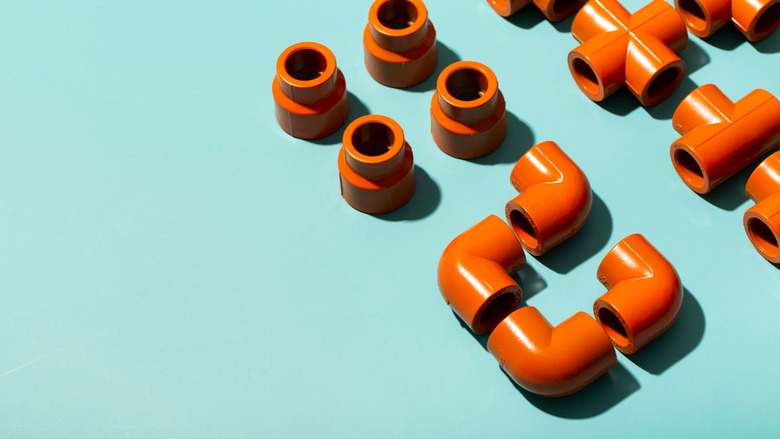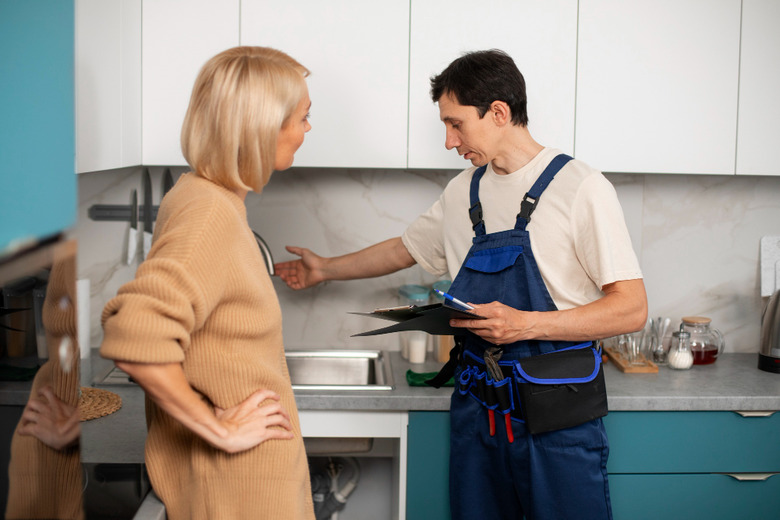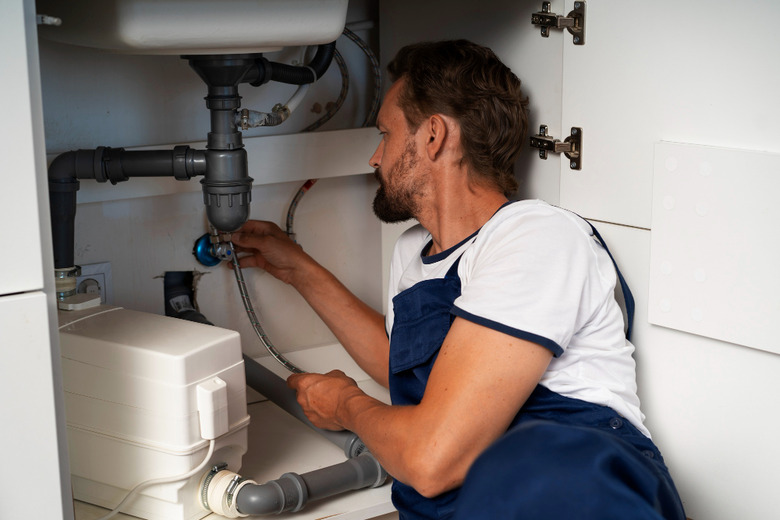As a homeowner, you are crucial in maintaining a comfortable and efficient home. One critical aspect of this is ensuring the proper functioning of your plumbing services. Regular plumbing maintenance prevents costly repairs and helps you avoid potential water damage. Here are the top 10 plumbing services every homeowner should schedule annually to keep their plumbing system in top condition.
WHAT’S INSIDE?
Why Annual Plumbing Services and Maintenance Is Crucial
What Does a Routine Plumbing Maintenance Check Include?
10 Plumbing Services Homeowners Should Schedule Annually
How Often Should You Schedule Plumbing Services?
Signs You Need Plumbing Maintenance
| KEY TAKEAWAYS Annual or semi-annual plumbing services are crucial for keeping plumbing systems in top condition and preventing emergencies and costly repairs. Regular checks catch minor issues before they escalate, avoiding expensive damages and lower home insurance claims. Annual checks are recommended for most homes, but older systems or those with prior issues may require semi-annual services. |
Why Annual Plumbing Services and Maintenance Is Crucial
Regular maintenance of plumbing services is essential for several reasons. By scheduling annual or semi-annual plumbing services, homeowners ensure their plumbing systems remain in top condition, saving money and avoiding the stress of plumbing emergencies.
-
- Prevention of Unexpected Failures. Regular checks and maintenance help catch minor issues before they escalate into significant problems, reducing the risk of unexpected plumbing failures that can cause inconvenience and require expensive emergency repairs.
-
- Cost Savings. Proactive maintenance can significantly lower the likelihood of costly repairs. For instance, fixing a simple leak early might cost only a fraction of what it would if left to worsen, potentially leading to severe water damage. According to data, water damage is one of the most common and expensive causes of home insurance claims. By maintaining plumbing systems regularly, homeowners can avoid these costly claims.
-
- Insurance Premium Benefits. Many insurance companies favor preventative measures that reduce the risk of damage. Regular plumbing maintenance may reduce premiums as the risk of water damage claims decreases.
-
- Extended Lifespan of Plumbing Systems. Routine maintenance such as cleaning drains, inspecting pipes for wear and tear, and checking sump pumps and water heaters extends the overall lifespan of these systems, ensuring they operate more efficiently for longer.
-
- Improved Home Safety and Health. Maintaining your plumbing system helps prevent issues like mold and mildew, which can affect the health of your home’s inhabitants. Leaks within walls, if unaddressed, not only compromise structural integrity but can also lead to health problems related to mold exposure.
-
- Energy Efficiency. A well-maintained plumbing system with no leaks ensures that water heaters and other appliances are not overworking, conserving energy and reducing utility bills.
-
- Environmental Impact. Regular maintenance contributes to water conservation by preventing leaks and reducing the incidence of major repairs, an important consideration in managing environmental impact.
What Does a Routine Plumbing Maintenance Check Include?
Regular inspections by certified plumbing services near you ensure that certified technicians thoroughly evaluate your home’s plumbing system. Each of these elements is crucial for ensuring the long-term health of your plumbing system, helping to prevent problems that could lead to more severe issues and expensive repairs.
Here’s what it typically encompasses:
Leak Detection
The inspection includes thorough checks for leaks in all accessible pipes, faucets, fixtures, and connections. Technicians use both visual assessments and specialized equipment to identify any hidden leaks.
Water Heater Assessment
Technicians examine water heaters for signs of corrosion or leaks, assess the thermostat and heating efficiency, and ensure the unit operates optimally. This often includes flushing the tank to remove sediment that can impact efficiency and lifespan.
Drain Cleaning and Inspection
Drains throughout the home are inspected for clogs or buildup that could cause backups. Advanced methods like camera inspections look deep into drain lines for obstructions or damage, followed by cleaning to ensure proper water flow.
Sump Pump Testing
The functionality of sump pumps is tested to verify they can effectively manage water ingress, especially in basements. This includes checking the activation mechanism and ensuring the discharge line is free of blockages.
Outdoor Plumbing Evaluation
Outdoor fixtures, including hose bibs and sprinkler systems, are checked for leaks and proper functionality. Technicians also ensure these systems are adequately prepared for weather conditions to prevent freeze damage.
Pipe Inspection
Pipes are scrutinized for signs of corrosion, wear, or other damage. This involves looking for rust on metal pipes and checking PVC pipes for cracks or brittleness, which is particularly important in older homes where the plumbing may be more susceptible to issues.

10 Plumbing Services Homeowners Should Schedule Annually
By scheduling these essential plumbing services annually, homeowners can maintain their plumbing systems in optimal condition, prevent unexpected problems, and save money in the long run. Here’s a detailed look at the top 10 essential plumbing services every homeowner should consider:
1. Checking for Leaks and Drips
Even small leaks can lead to significant water damage and waste. According to the Environmental Protection Agency (EPA), adding regular checks to your plumbing services can prevent more than 10,000 gallons of water from being wasted each year. Moreover, fixing these leaks can save homeowners about 10% on their water bills.
Here’s a closer look at the specific benefits and techniques involved in this critical service:
-
- Prevent Mold and Mildew Growth. Moist environments created by dripping water are ideal for the growth of mold and mildew, which can pose health risks to residents, particularly those with respiratory issues. Regular checks help maintain a healthier living environment by preventing the growth of these organisms.
-
- Protect Home Value. Continuous maintenance, including leak checks, helps preserve and even increase the value of your home. Prospective buyers scrutinize homes for signs of neglect, and a well-maintained plumbing system is a significant selling point.
-
- Detection Techniques. During a plumbing inspection, professionals employ various techniques to detect leaks, including:
-
- Visual Inspections: Technicians check all accessible pipework for signs of moisture.
-
- Moisture Meters: These tools help detect hidden damp spots behind walls and under floors.
-
- Acoustic Devices: Used to hear the subtle sounds of water dripping or running through walls, which might otherwise go unnoticed.
2. Water Heater Inspection and Maintenance
According to manufacturer data, water heaters should be serviced annually to maintain efficiency and extend their lifespan, which typically ranges from 10 to 15 years. This service includes checking:
-
- Energy Efficiency: Routine maintenance includes adjusting the thermostat to optimal levels to save energy and inspecting for sediment build-up that can impair efficiency.
-
- Safety Checks: Inspectors check for carbon monoxide leaks and ensure all safety valves function correctly to prevent dangerous pressure build-ups.
-
- Longevity of Equipment: Regular tank flushing and replacing parts like the anode rod can significantly extend the water heater’s life.
3. Drain Cleaning
Regular drain cleaning is crucial to prevent blockages and backups, preserving the health of your plumbing system. For example, kitchen drains can accumulate buildup from fats, oils, and grease, leading to clogs. Clearing these drains regularly can prevent costly and messy backups. Including this service in your annual plumbing services ensures that your drains stay free of obstructions that could lead to costly backups.
-
- Prevent Blockages: Regular removal of buildup from everyday substances like hair, soap scum, and kitchen waste keeps drains flowing smoothly.
-
- Camera Inspection: Advanced camera techniques help spot potential problems deep within the plumbing system, allowing for targeted cleaning and repairs.
-
- Odor Reduction: Clean drains mean fewer odors, which can enhance the overall ambiance of your home.
4. Toilet Maintenance
Toilets are the primary water users in homes, accounting for about 30% of indoor water consumption. Older, inefficient models are prone to leaks, continuous running, and clogs, which can waste up to 6 gallons per flush. Therefore, incorporating toilet maintenance into your annual plumbing services helps address common issues leading to higher water bills and potential water damage. Routine maintenance includes:
-
- Leak Prevention: Checking for and replacing worn flappers and seals prevents leaks, saving significant water.
-
- Clog Prevention: Routine inspections help catch small obstructions before they lead to more significant problems.
-
- Efficiency Checks: Adjusting the float and ensuring the fill valve functions properly ensures the toilet operates efficiently.
5. Checking for Water Pressure Issues
Incorrect water pressure can severely strain and damage your plumbing system. Annual checks from your trusted plumbing services should use pressure gauges to measure water pressure and adjust it to within the safe range of 40-60 psi to prevent damage to pipes and fixtures.
-
- Prevent Pipe Damage: Correct water pressure prevents undue stress on pipes, reducing the risk of leaks or bursts.
-
- Gauge Testing: Professional plumbers use specialized gauges to measure and adjust water pressure accurately.

6. Inspecting and Maintaining Pipes
Regular pipe inspections are crucial as they help identify potential issues before they develop into serious problems. For example, a routine inspection might reveal a small leak in its early stages, which can be repaired easily and inexpensively. Left unchecked, this small leak could worsen, potentially leading to significant water damage, structural issues, and much higher repair costs. Regular maintenance helps catch such problems early and extends the life of your plumbing infrastructure by preventing severe damage and ensuring that all components are functioning correctly.
Inspection techniques include:
-
- Visual Inspections: Technicians conduct thorough visual inspections of all exposed pipework. This includes checking joints and connections for signs of wear or leakage and examining pipe surfaces for signs of corrosion or damage.
-
- Pressure Tests: Pressure tests may be conducted to ensure pipes are operating at optimal pressure and detect hidden leaks. These tests can identify weak spots in the pipe that might not be visually apparent.
-
- Video Pipe Inspections: Advanced techniques, such as using video cameras, allow for a close inspection of internal pipe conditions. These cameras can travel through pipes to provide real-time feedback on their condition, capturing issues like blockages, cracks, and build-up that are not visible from the outside.
-
- Cleaning and Unclogging: Part of maintaining pipes involves cleaning and removing any build-ups or blockages. This might include descaling pipes to remove mineral deposits that can accumulate in areas with hard water.
-
- Repair and Replacement: If inspection reveals any damaged or deteriorated sections, prompt repairs or replacement can be carried out to restore the integrity of the plumbing system. This could involve patching small leaks or replacing sections of pipe that are beyond repair.
7. Testing Sump Pump Functionality
Sump pumps are vital to your home’s flood prevention strategy, particularly if you have a basement. Testing the functionality of sump pumps is an essential part of your annual plumbing services. This ensures that they are operational and reliable, ready to handle the influx of water during heavy rains or snow melts. Regular testing can detect issues such as motor failure, clogged discharge lines, or faulty float switches before they lead to a failure. Ensuring that your sump pump is in good working order before it’s needed most can prevent the potentially devastating effects of basement flooding, protecting your property and maintaining the integrity of your home’s foundation.
-
- Operational Checks: Testing the sump pump’s operation before the rainy season can prevent unexpected failures.
-
- Maintenance Tasks: Cleaning and checking the pump and outlet pipes ensure functionality.
8. Inspecting Outdoor Plumbing Fixtures
Outdoor plumbing fixtures require thorough annual inspections as part of your plumbing services to ensure they withstand the elements and function properly throughout the year. This is especially crucial in areas that experience freezing temperatures like Watertown, CT, which can cause significant damage to unprepared plumbing systems.

-
- Properly preparing outdoor fixtures for winter can prevent freezing and subsequent damage.
-
- Includes draining systems, insulating pipes, and covering exposed fixtures to protect them from the cold.

-
- Routine inspections can identify leaks early, which conserves water and prevents damage.
-
- Technicians check for dripping faucets, leaking connections, and wear on seals and gaskets.

-
- Ensures all outdoor faucets, hose bibs, and irrigation systems operate correctly.
-
- Includes testing for proper water flow and checking for blockages or malfunctions in sprinkler systems.
9. Checking for Signs of Water Damage
Incorporating checks for signs of water damage into your annual plumbing services is essential for maintaining your home’s structural integrity. Identifying these signs early can prevent the need for costly repairs and mitigate further damage.

-
- Inspectors look for any signs of water damage such as staining, warping, or mold growth on walls, ceilings, and floors.
-
- Check for peeling paint or wallpaper, indicating dampness behind the walls.

-
- Moisture detectors find hidden wet spots, especially in hard-to-see areas like crawl spaces and behind walls.
-
- Helps in pinpointing the exact location of leaks to ensure precise repairs.

-
- Identifying areas prone to water ingress, such as basements and low-lying windows.
-
- Recommending preventive measures like additional sealing or drainage improvements.
10. Professional Plumbing Inspection
Scheduling a comprehensive plumbing inspection by a professional as part of your annual plumbing services ensures that every aspect of your plumbing system is thoroughly checked and maintained.

-
- A complete assessment from the water primary to the faucets ensures all parts are in good condition.
-
- Includes checking water pressure, drain performance, and the condition of fixtures and appliances.

-
- Professionals can guide you through any necessary repairs or upgrades.
-
- Offering advice on modernizing fixtures for efficiency and sustainability.

-
- Includes pressure tests to detect hidden leaks and drainage tests to ensure proper flow throughout the system.
-
- Using advanced diagnostics tools to troubleshoot complex issues.
How Often Should You Schedule Plumbing Services?
Deciding how frequently to schedule plumbing maintenance is key to maintaining the integrity and efficiency of your home’s plumbing system. Experts recommend annual plumbing services for most homes to ensure everything is functioning correctly. This regular check helps identify and address minor issues before they escalate into significant problems.
Older and Previously Troubled Systems
Homes with older plumbing systems or those that have experienced frequent plumbing issues may require more frequent checks. Semi-annual maintenance, occurring every six months, can help manage the higher risk of plumbing failures in these homes. This is particularly crucial for systems susceptible to recurring problems like clogs, leaks, or inefficiencies.
Adjusting Frequency Based on Usage and Exposure
Homes with heavy usage or significant exposure to environmental factors might also benefit from more frequent inspections and maintenance. This proactive approach ensures that potential disruptions are managed promptly, maintaining continuous operation and comfort.
Signs You Need Plumbing Services
Being aware of the signs that indicate a need for plumbing maintenance can help you prevent more significant issues and ensure that your plumbing services are timely and effective. These indicators suggest that your plumbing system is not functioning optimally and should be checked to prevent further damage and potentially costly repairs. Here are key symptoms to watch out for:
-
- Slow Drains. If water pools rather than drains quickly, it might indicate a blockage forming in your pipes, requiring professional attention.
-
- Audible Leaks. Sounds of dripping or running water when all taps are closed can signal hidden leaks that waste water and potentially cause damage.
-
- Odd Noises from Pipes. Banging, whistling, or groaning sounds from the pipes can be signs of air in the pipes, high water pressure, or imminent failures.
-
- Fluctuating Water Pressure. If water pressure inconsistently changes from high to low, it might indicate an issue in your plumbing system that needs to be addressed.
Schedule Your Plumbing Services in Watertown, CT, Today!
Don’t let a minor plumbing issue become a major headache! Regular plumbing maintenance is crucial for maintaining the integrity and efficiency of your home. By choosing professional plumbing services like L&P Plumbing in Watertown, CT, you’re selecting a trusted provider committed to ensuring your plumbing system operates flawlessly all year round. Schedule our top 10 recommended plumbing services today and protect your home from preventable damage.
Let L&P Plumbing help you keep your home in top condition — contact us now and secure the peace of mind you deserve!

